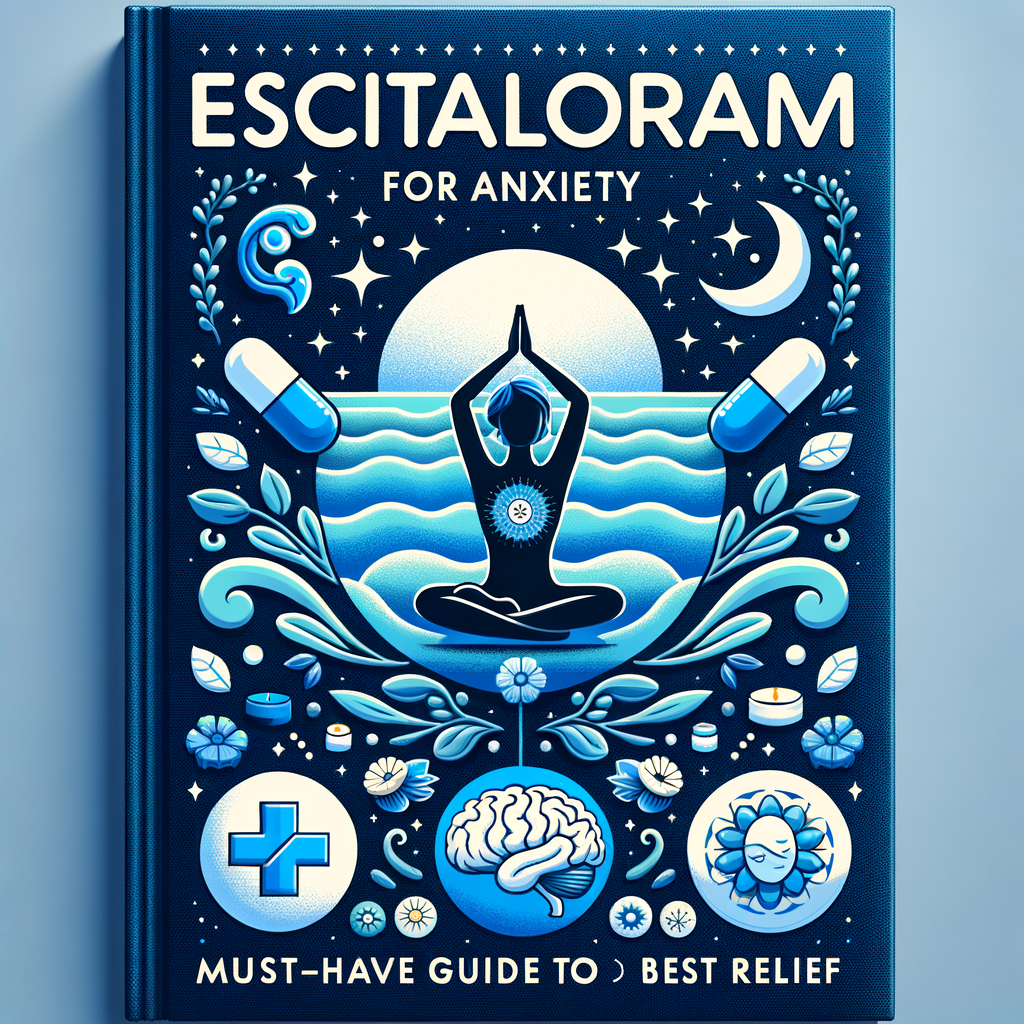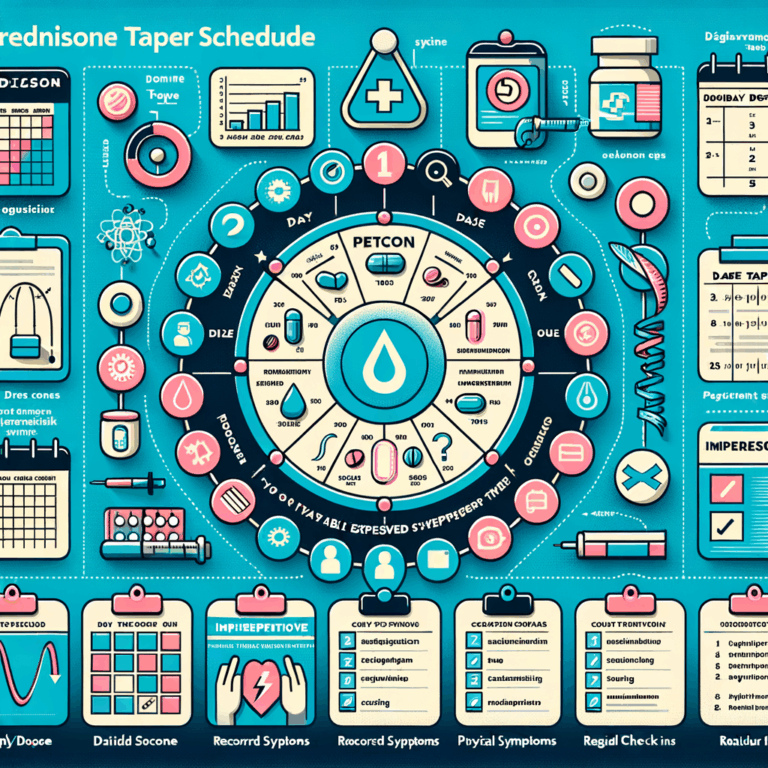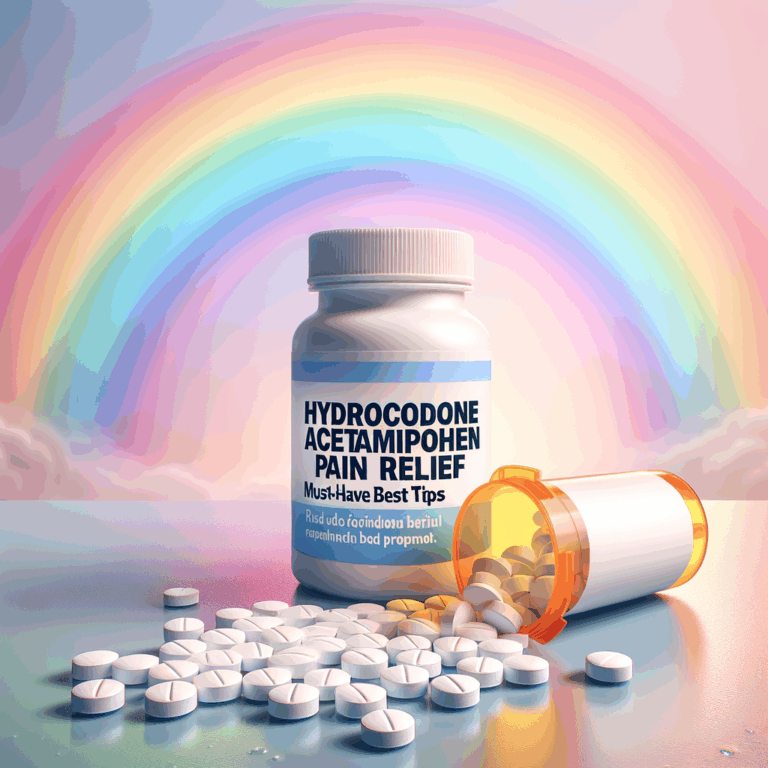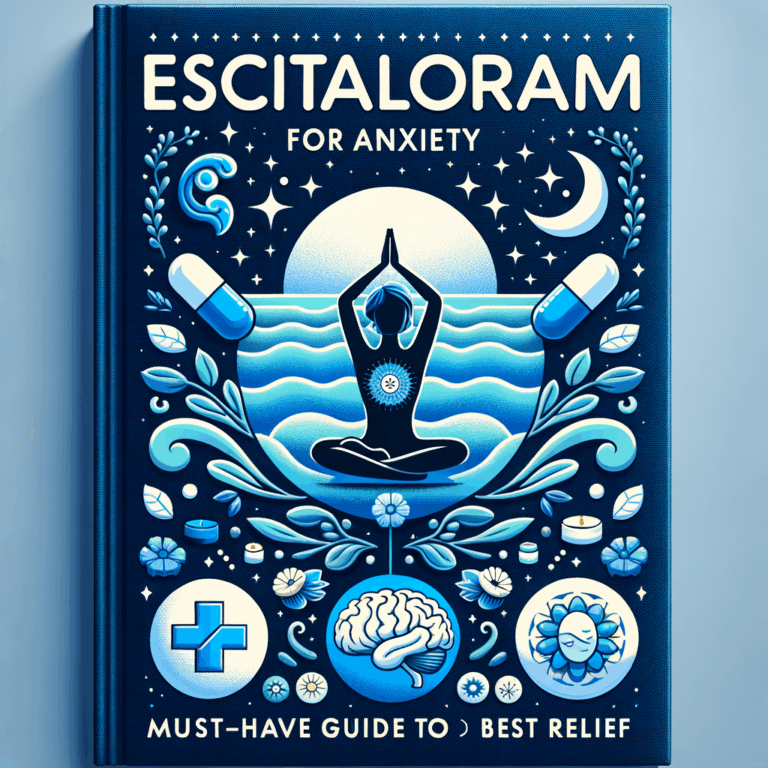
- Introduction
- What Is Escitalopram?
- Escitalopram vs. Other SSRIs
- How Escitalopram Works
- Onset of Action and Steady State
- Effectiveness for Anxiety
- Real-World Outcomes
- Dosage and Administration
- Dosage Table (Typical Adult Guidelines)
- Side Effects and Risks
- Common vs. Serious Side Effects
- Drug Interactions and Contraindications
- Common Interaction Examples
- Who Should and Shouldn’t Take Escitalopram?
- Special Populations
- Combining Escitalopram with Therapy and Lifestyle Changes
- Practical Daily Tips
- Managing Side Effects
- When to Contact Your Provider
- Monitoring and Follow-Up
- What Providers Usually Check
- Tapering and Discontinuation
- Helpful Tapering Strategies
- Tips to Get the Best Relief from Escitalopram
- Checklist for Best Results
- Practical Patient Stories (Anonymized)
- Common Misconceptions
- When Escitalopram May Not Work
- Next Steps When It Fails
- Legal and Accessibility Issues
- Summary and Final Thoughts
- Frequently Asked Questions (FAQs)
- 1. How long before escitalopram starts working for anxiety?
- 2. Can I drink alcohol while taking escitalopram?
- 3. What happens if I miss a dose?
- 4. Is escitalopram addictive?
- 5. Will escitalopram make me gain weight?
- 6. Can adolescents take escitalopram for anxiety?
- 7. How does escitalopram compare to therapy alone?
- 8. Are there natural alternatives to escitalopram?
- 9. What should I tell my surgeon or dentist before a procedure?
- 10. How do I know if I should stop escitalopram?
- References
Introduction
Escitalopram for anxiety has become one of the most prescribed treatments worldwide. Many people seek clear information about how it works, what to expect, and how to get the best relief. This guide provides easy-to-follow, evidence-based information to help you understand escitalopram and make better decisions with your healthcare provider.
Throughout this article, you will find practical tips, safety notes, and answers to common questions. I use plain language and clear steps so you can act confidently. Remember, this guide supplements medical advice—it does not replace your prescriber.
What Is Escitalopram?
Escitalopram is a selective serotonin reuptake inhibitor (SSRI). It increases serotonin levels in the brain, which can reduce anxiety and improve mood. Doctors often prescribe it for generalized anxiety disorder (GAD), panic disorder, social anxiety disorder, and depression.
Pharmaceutical brands and generic forms exist. The drug usually comes as tablets or liquid. It offers a well-studied option with a relatively favorable side-effect profile compared with older medications.
Escitalopram vs. Other SSRIs
Compared with other SSRIs, escitalopram often acts faster and causes fewer side effects for many users. However, individual responses vary widely. For example, some people tolerate sertraline or fluoxetine better.
Therefore, doctors choose medications based on symptoms, medical history, and side-effect risk. Trials and follow-ups guide any necessary changes.
How Escitalopram Works
Escitalopram blocks the reuptake of serotonin into nerve cells. Consequently, more serotonin stays available in the synaptic gap. This change helps regulate mood and reduces anxiety symptoms over time.
The brain adapts slowly to higher serotonin levels. Thus, most people notice improvement after several weeks. Immediate relief is rare, so patience and consistent use are essential.
Onset of Action and Steady State
Escitalopram reaches steady levels in the blood within 1 to 2 weeks. Yet, meaningful symptom relief often takes 4 to 6 weeks. For panic disorder, some people see earlier benefits; for generalized anxiety, effects may take longer.
Clinicians usually wait at least 6 to 12 weeks before altering the dose. They consider patient reports, symptom scales, and side effects before making changes.
Effectiveness for Anxiety
Clinical trials support escitalopram for multiple anxiety disorders. Studies show significant improvements in GAD, social anxiety, and panic disorder compared with placebo. Many patients experience reduced worry, fewer panic attacks, and better daily function.
However, not everyone benefits fully. Some need dose adjustments, combination therapy, or a different medication. Still, escitalopram remains a first-line option for many patients due to its balance of efficacy and tolerability.
Real-World Outcomes
In real-world practice, adherence and lifestyle factors influence results. People who combine escitalopram with therapy often do better. Moreover, starting with lower doses and gradually increasing can improve tolerability and adherence.
Regular follow-up improves outcomes. Brief psychiatric scales, medication reviews, and open discussions allow clinicians to tailor therapy and address problems early.
Dosage and Administration
Doctors typically start adults at 10 mg once daily for anxiety. They may increase to 20 mg daily if symptoms persist and side effects remain tolerable. For older adults or people with liver or kidney issues, starting doses are lower—often 5 mg daily.
Take escitalopram at the same time each day. You may take it with or without food. Do not crush or chew extended-release forms unless the label permits.
Dosage Table (Typical Adult Guidelines)
| Condition | Starting Dose | Usual Maintenance Dose | Max Dose |
|---|---|---|---|
| Generalized Anxiety Disorder | 10 mg/day | 10–20 mg/day | 20 mg/day |
| Panic Disorder | 10 mg/day | 10–20 mg/day | 20 mg/day |
| Older Adults / Hepatic Impairment | 5 mg/day | 5–10 mg/day | 10 mg/day |
Side Effects and Risks
Escitalopram causes side effects in some people. Common effects include nausea, headache, sleep changes, and sexual dysfunction. Usually, these effects are mild and fade within weeks. If they persist, talk to your prescriber.
Rare but serious risks include serotonin syndrome and increased suicidal thoughts in young people. Also, withdrawal symptoms can occur when stopping suddenly. Therefore, never alter doses without medical supervision.
Common vs. Serious Side Effects
– Common: nausea, dry mouth, drowsiness, insomnia, sweating, tremor.
– Serious (seek help): chest pain, severe allergic reaction, severe agitation, suicidal thoughts, high fever or stiff muscles (possible serotonin syndrome).
If you notice severe or unusual symptoms, seek immediate medical care.
Drug Interactions and Contraindications
Escitalopram interacts with many medications. Combining it with MAO inhibitors can cause dangerous serotonin syndrome. Also, mixing it with certain migraine or antidepressant drugs increases risk. Check with your provider and pharmacist.
Additionally, escitalopram can affect blood clotting. Combining it with NSAIDs, aspirin, or blood thinners raises bleeding risk. If you take anticoagulants, monitor closely.
Common Interaction Examples
– Dangerous: MAO inhibitors (e.g., phenelzine), triptans in some cases.
– Caution: NSAIDs, warfarin, other SSRIs/SNRIs, certain antibiotics like linezolid.
– Enzyme interactions: Drugs that affect CYP2C19 can alter escitalopram levels.
Always provide your prescriber with a complete medication list, including supplements and over-the-counter drugs.
Who Should and Shouldn’t Take Escitalopram?
Escitalopram suits many adults with anxiety disorders. Clinicians favor it when patients need evidence-based pharmacotherapy with manageable side effects. It may also help people with co-occurring depression.
However, it isn’t right for everyone. People with recent MAOI use, known hypersensitivity to escitalopram, or certain cardiac conditions may need alternatives. Pregnant or breastfeeding people should discuss risks and benefits with their doctor.
Special Populations
– Older adults: lower starting doses and careful monitoring for hyponatremia and falls.
– Pregnant people: weigh risks of untreated anxiety against potential drug effects on the fetus.
– Adolescents: increased monitoring due to a small rise in suicidal thoughts and behaviors.
Your clinician will personalize the plan to match your health profile and goals.
Combining Escitalopram with Therapy and Lifestyle Changes
Medication often works best with psychotherapy. Cognitive behavioral therapy (CBT) pairs well with escitalopram. Together, they reduce symptoms and teach coping skills. This combination also reduces relapse risk.
Lifestyle changes support recovery. Regular exercise, sleep hygiene, and stress-management techniques add measurable benefits. Moreover, avoiding alcohol and recreational drugs improves medication effectiveness.
Practical Daily Tips
– Take your pill at the same time each day.
– Keep a symptom diary to track progress.
– Attend regular therapy sessions.
– Manage stress through breathing, mindfulness, or yoga.
These simple steps increase your chances of meaningful relief.
Managing Side Effects
If side effects appear, start by giving your body a couple of weeks to adapt. Take the medication with food to ease nausea. Also, split doses only if advised by a clinician.
If side effects persist, your doctor may lower the dose or switch drugs. For sexual side effects, options include dose timing, medication holidays (rarely recommended), or switching to another antidepressant. Discuss all options openly.
When to Contact Your Provider
– Severe allergic reaction (rash, swelling)
– Suicidal thoughts or sudden mood changes
– Signs of serotonin syndrome: high fever, confusion, muscle rigidity, twitching
– Significant bleeding or easy bruising
Early contact helps prevent complications and allows timely adjustments.
Monitoring and Follow-Up
Your provider should see you regularly during the first few months. They will assess symptoms, side effects, and adherence. Clinicians may use standardized scales like the GAD-7 to track progress.
Blood tests may be necessary if you have other medical conditions. Also, check-in when starting other medications to avoid interactions. Frequent communication makes treatment safer and more effective.
What Providers Usually Check
– Symptom severity scales (GAD-7, PHQ-9)
– Blood pressure and weight
– Side-effect review
– Medication interactions and alcohol use
Bring notes to appointments to ensure you cover all concerns.
Tapering and Discontinuation
Stop escitalopram only under medical supervision. Abrupt cessation can cause discontinuation symptoms. These may include dizziness, vivid dreams, irritability, and electric shock sensations. They often start within days of stopping.
Clinicians taper slowly to reduce withdrawal risk. A typical taper decreases the dose gradually over weeks or months, depending on duration and dose. Discuss a personalized plan with your prescriber before making changes.
Helpful Tapering Strategies
– Gradual dose reduction (e.g., 10–25% every 1–2 weeks)
– Slower taper if you had long-term use
– Symptom monitoring and support during taper
– Consider switching to a longer-acting SSRI before taper in some cases
Work with your prescriber to adapt the taper to your needs.
Tips to Get the Best Relief from Escitalopram
To maximize benefits, use escitalopram consistently and combine it with therapy. Keep a routine to support adherence. Also, avoid alcohol and recreational drugs while taking medication.
Communicate openly with your prescriber about side effects and expectations. Track symptoms weekly and share the results. Finally, set realistic goals: symptom reduction takes time, not overnight cures.
Checklist for Best Results
– Take medication daily at the same time.
– Schedule follow-ups at 2, 6, and 12 weeks.
– Combine with CBT or another evidence-based therapy.
– Keep a symptom and side-effect log.
– Report new medications or supplements.
This checklist helps you and your clinician make timely, effective adjustments.
Practical Patient Stories (Anonymized)
A 34-year-old with generalized anxiety started escitalopram 10 mg. Within four weeks, she reported less constant worry. After eight weeks, her functioning returned to normal. She combined medication with CBT and found lasting benefits.
A 62-year-old man started at 5 mg because of liver disease. He experienced mild nausea that faded after ten days. The prescriber adjusted the dose based on symptoms and lab monitoring. He achieved anxiety control without major side effects.
These examples show that tailored plans and patience lead to successful outcomes.
Common Misconceptions
People often fear immediate dependence or personality changes. Escitalopram does not make you a different person. Instead, it reduces overwhelming anxiety so you can act more like yourself. Also, it rarely causes physical dependence in the way sedatives or opioids do.
Another myth says antidepressants fix everything alone. In reality, medication helps many people, but therapy and lifestyle changes amplify and sustain improvement.
When Escitalopram May Not Work
Sometimes escitalopram fails to control symptoms. Possible reasons include incorrect diagnosis, insufficient dose or duration, poor adherence, or interactions with other drugs. Biological differences and co-occurring conditions may also lessen response.
If the medication doesn’t help after an adequate trial, your clinician may switch drugs, add therapy, or explore non-pharmacologic treatments like transcranial magnetic stimulation (TMS).
Next Steps When It Fails
– Confirm the diagnosis and rule out medical causes
– Ensure adequate dose and duration (≥6–12 weeks)
– Assess adherence and interactions
– Consider switching to another SSRI or an SNRI
– Add psychotherapy or other evidence-based treatments
Plan changes with your provider to avoid abrupt stop effects.
Legal and Accessibility Issues
Escitalopram has wide regulatory approval, but coverage varies by country and insurer. Generic versions improve affordability. Some regions bundle mental health services differently, affecting access to therapy and follow-up care.
If cost is a barrier, ask about generics, patient assistance programs, or lower-cost clinics. Many healthcare systems offer sliding-scale mental health services.
Summary and Final Thoughts
Escitalopram for anxiety offers a powerful, research-backed option for many people. It works by increasing serotonin and often reduces excessive worry, panic, and social anxiety. Start at a low dose, expect several weeks before improvement, and combine medication with therapy for best results.
Stay in close contact with your prescriber and report side effects promptly. With patience and a good treatment plan, many people regain control and improve quality of life.
Frequently Asked Questions (FAQs)
1. How long before escitalopram starts working for anxiety?
Most people notice initial changes within 2 to 4 weeks. However, full benefit often takes 6 to 12 weeks. Individual responses vary, so stay patient and consistent.
2. Can I drink alcohol while taking escitalopram?
You should avoid alcohol if possible. Alcohol can worsen anxiety and increase side effects like drowsiness. Discuss your specific situation with your clinician.
3. What happens if I miss a dose?
Take the missed dose as soon as you remember. If it’s near the next dose, skip the missed one. Do not double up doses. Regular dosing maintains steady blood levels.
4. Is escitalopram addictive?
Escitalopram is not addictive in the way benzodiazepines or opioids are. However, stopping abruptly can cause withdrawal-like symptoms. Taper slowly under medical supervision.
5. Will escitalopram make me gain weight?
Some people gain weight, and others lose weight. Weight changes vary and often relate to improved appetite or lifestyle. Monitor your weight and discuss concerns with your provider.
6. Can adolescents take escitalopram for anxiety?
Yes, but with caution. Providers monitor youth closely because SSRIs carry a slightly increased risk of suicidal thoughts in people under 25. Balance benefits and risks and ensure frequent follow-up.
7. How does escitalopram compare to therapy alone?
Both help, but combining escitalopram with therapy, like CBT, often produces better and faster results. Therapy equips you with skills that target thoughts and behaviors directly.
8. Are there natural alternatives to escitalopram?
Some people try exercise, mindfulness, or supplements like omega-3s and magnesium. While helpful for mild anxiety, these approaches often lack the consistent benefit seen with SSRIs for moderate to severe anxiety. Discuss supplements with your clinician.
9. What should I tell my surgeon or dentist before a procedure?
Inform them you take escitalopram. Certain anesthetics or pain medications can interact. Your prescriber or surgeon will coordinate any temporary changes.
10. How do I know if I should stop escitalopram?
Do not stop without medical advice. You might stop if side effects outweigh benefits or if a clinician recommends switching. If stopping, follow a supervised taper plan.
References
– Baldwin, D.S., et al. (2014). Escitalopram treatment for generalized anxiety disorder: A randomized controlled trial. Journal of Clinical Psychiatry. https://pubmed.ncbi.nlm.nih.gov/25062453/
– Stein, D.J., et al. (2008). Escitalopram in the treatment of generalized anxiety disorder: a double-blind, placebo-controlled study. International Clinical Psychopharmacology. https://pubmed.ncbi.nlm.nih.gov/18421005/
– National Institute for Health and Care Excellence (NICE). (2019). Generalised anxiety disorder and panic disorder in adults: management. https://www.nice.org.uk/guidance/cg113
– U.S. Food and Drug Administration (FDA). Escitalopram (Lexapro) prescribing information. https://www.accessdata.fda.gov/drugsatfda_docs/label/2016/021323s046lbl.pdf
– Mayo Clinic. Escitalopram (Lexapro): Uses, side effects, interactions. https://www.mayoclinic.org/drugs-supplements/escitalopram-oral-route/description/drg-20063977
Disclaimer: This article provides general information only. It does not replace professional medical advice. Always consult your healthcare provider before starting, stopping, or changing medication.



